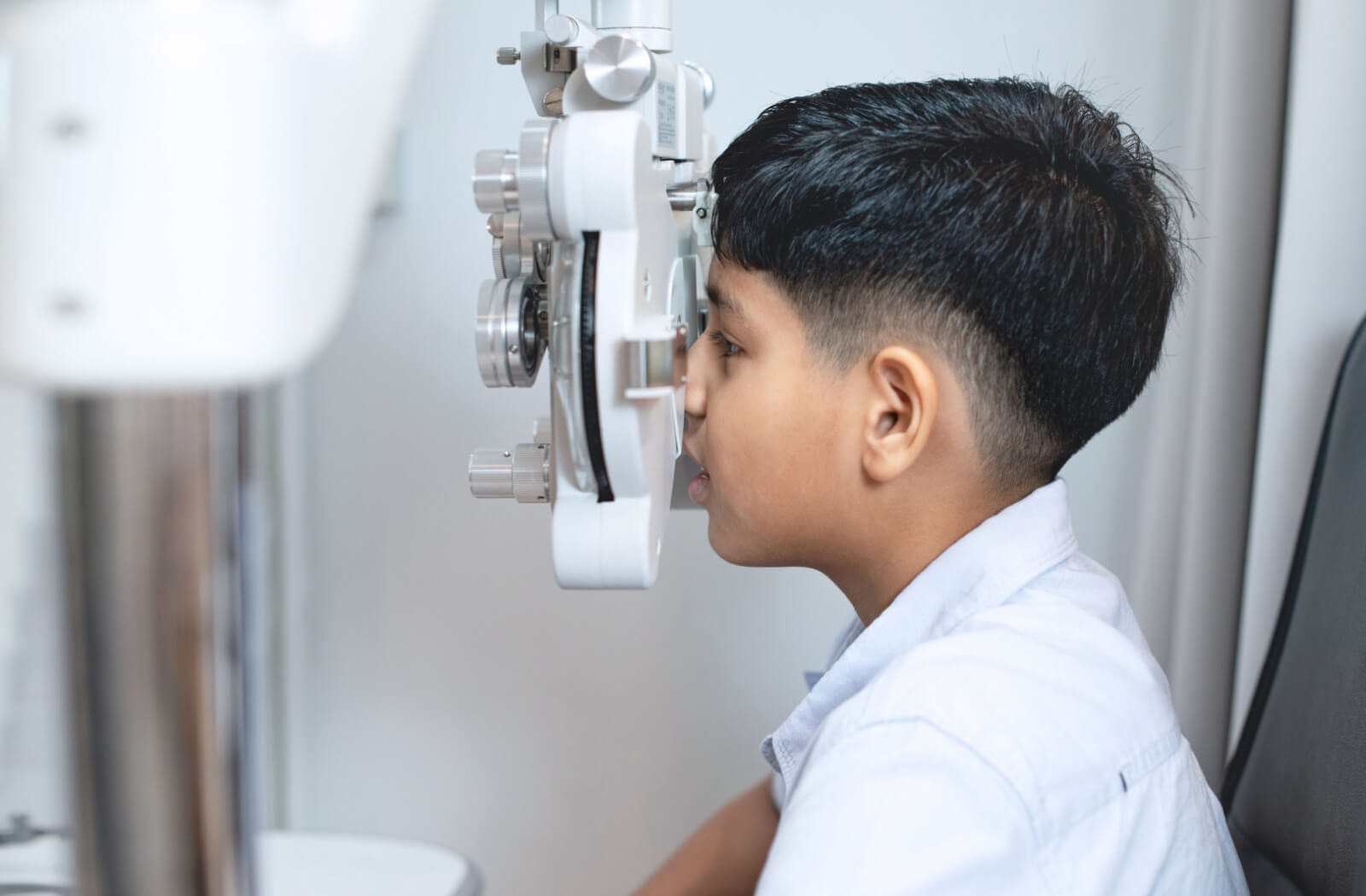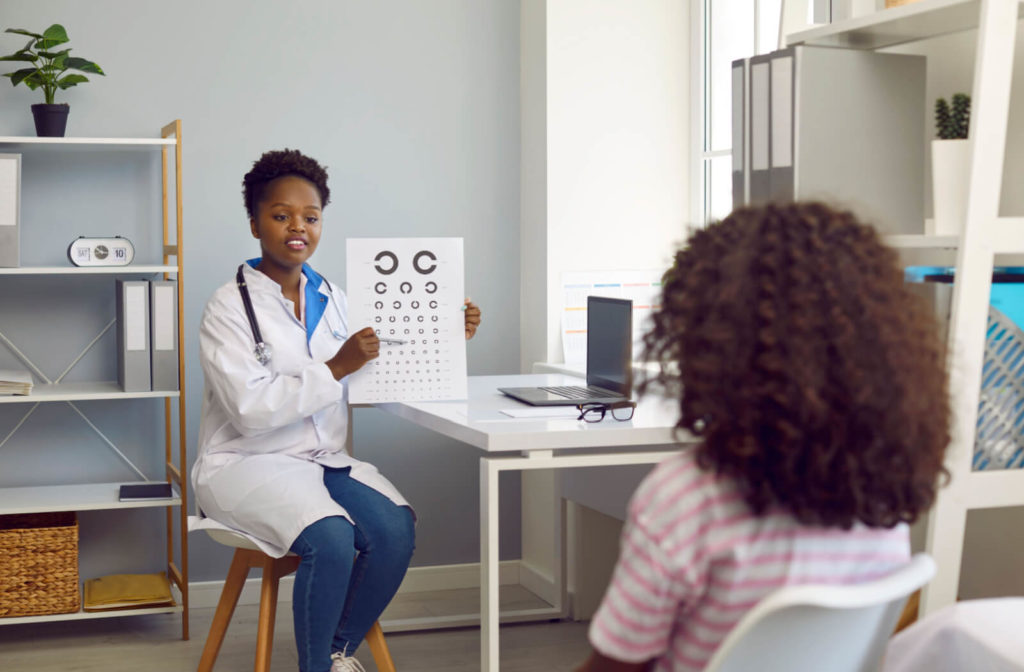As a parent, you want to ensure your child is healthy and thriving in every aspect of life. One crucial aspect that might sometimes go unnoticed is your child’s vision health. Your child may need glasses or contacts, and you don’t even know it.
Regular eye exams are essential to monitor and maintain your child’s eye health. How often your child should have an eye exam will be determined and recommended by your optometrist. Regardless of the last time your child’s eye exam was, any new symptoms or eye issues should be looked into as soon as possible.
Why Are Eye Exams Important for Children?
Children rely heavily on their vision to learn and explore the world around them. Undetected vision problems can hinder their academic performance, social interactions, and quality of life. Unlike adults, who can often communicate their discomfort or issues, children might not always be able to articulate their visual struggles effectively.
What Does a Doctor Look for During an Eye Exam?
Eye exams for children can help detect a variety of vision issues. During the exam, the eye doctor performs a series of tests and assessments to gather information about your child’s eyes and vision. Here’s what the doctor will look for:
Refractive Errors
Refractive errors occur when the shape of the eye makes it difficult to focus light correctly. Common refractive errors include nearsightedness (myopia), farsightedness (hyperopia), and astigmatism. These conditions can affect a child’s ability to see clearly at different distances. Undiagnosed refractive errors can lead to squinting, headaches, or avoidance of certain activities.
Amblyopia
Amblyopia (lazy eye) occurs when one eye has significantly better vision than the other, causing the brain to rely more on the stronger eye. This condition can lead to permanent vision loss in the weaker eye if left untreated.
Strabismus
Strabismus (crossed or misaligned eyes) can cause double vision, depth perception issues, and social and emotional challenges due to the appearance of misaligned eyes.
Eye Health Concerns
Regular eye exams can also identify eye health issues like infections and allergies.
When Should Your Child Have an Eye Exam?
Regular children’s eye exams play a vital role in maintaining good eye health and catching potential issues early. But when do children need eye exams? Children’s eyes grow quickly, so optometrists like to examine them depending on age and developmental milestones.
First Eye Exam
According to the Canadian Association of Optometrists, babies and young children should have their first eye exam between 6 and 9 months. This initial exam helps detect congenital eye problems, alignment issues, or other potential concerns that might affect their visual development.
Second Eye Exam
Your child’s second eye exam should be when they’re preschoolers, between 2 and 5 years of age. At this stage, your child’s eye coordination and visual abilities are further developed, making it possible for their eye doctor to assess their vision more accurately.
Before Starting School: Ages 5–6
Your child should have another comprehensive eye exam before they start school, usually around ages 5 to 6. This exam ensures any emerging refractive errors or visual conditions are addressed before they can impact your child’s early learning. Children older than 5 are covered under OHIP for a single annual eye test and regular follow-up/partial assessments.
Regular Checkups: Ages 6 and Up
Once your child starts school, they should have an eye exam every year. These regular checkups help monitor their vision and detect any changes that might occur as they grow.
Vision Correction Needs: Annual Exams
Annual eye exams are essential if your child requires eyeglasses or contact lenses. Vision correction needs can change over time, especially during growth spurts, so frequent checkups ensure their prescription remains accurate and effective.
How to Prepare for Your Kid’s Eye Exam
Visiting the eye doctor can sometimes be an intimidating experience for kids. However, with a bit of preparation and a positive approach, you can help ease your child’s concerns and make their eye exam a smooth and enjoyable process.
Start by talking to your child about the eye exam in a positive and reassuring manner. Explain that the doctor wants to check their eyes to ensure they’re healthy and help them see clearly. Use age-appropriate language to explain what will happen during the exam. Explain some of the tools the eye doctor might use, and emphasize that none of the equipment will hurt.
This is also a good time to ask your child if they have any worries or questions about the exam. Let them know it’s okay to feel curious or nervous, but the doctor is there to help.
If your child has a favourite stuffed animal, blanket, or toy, let them bring it along. Having something familiar can provide comfort during the exam.
Lastly, consider planning a special treat or activity after the exam to give your child something to look forward to and create a positive association with the experience.

How to Know If Your Child Has Vision Issues?
Children may not always be able to express their visual discomfort, so awareness of potential signs of vision issues is crucial. While regular eye exams are the best way to know if your child is experiencing vision issues, there are some signs that may indicate your child needs an eye exam:
- Frequent eye rubbing or blinking
- Squinting to see distant objects
- Holding books or devices close to their face
- Consistently tilting their head to one side
- Complaining of headaches or eye discomfort
- Difficulty maintaining attention during close-up activities
- losing place while reading
- omitting or confusing words when reading
- performing below their potential
Tips for Managing Your Child’s Eye Health
Caring for your child’s eye health is an essential part of their overall well-being and development. Here are some valuable tips to help you effectively manage and promote your child’s eye health:
- Regular eye exams are the foundation of good eye health. Follow the recommended schedule provided by eye care professionals to ensure potential issues are detected early.
- Limit your child’s screen time and ensure they take frequent breaks when using digital devices. The 20-20-20 rule—looking at something 20 feet away for 20 seconds every 20 minutes—can help reduce eye strain.
- Outdoor activities promote physical well-being and help prevent myopia (nearsightedness).
- A diet rich in nutrients like vitamin A, vitamin C, and omega-3 fatty acids supports healthy eyes. Include carrots, leafy greens, fish, and citrus fruits in your child’s diet
- When outdoors, have your child wear sunglasses that offer UV protection. Prolonged exposure to UV rays can increase the risk of eye conditions later in life.
Clear Vision for a Bright Future
Your child’s vision is a precious gift that significantly impacts their growth and development. Regular eye exams are crucial in identifying and addressing vision issues early on, ensuring your child can explore the world with clarity and confidence. By following the recommended schedule for eye exams, you are taking a proactive step in safeguarding your child’s vision health and setting them up for success in both their academic and personal lives.
Simcoe Optometric Clinic is here to work with you and your family to help you enjoy clear vision for a bright future. Book your appointment today.




